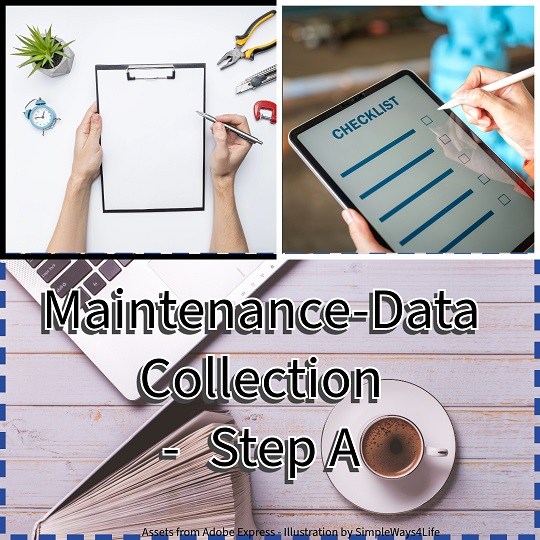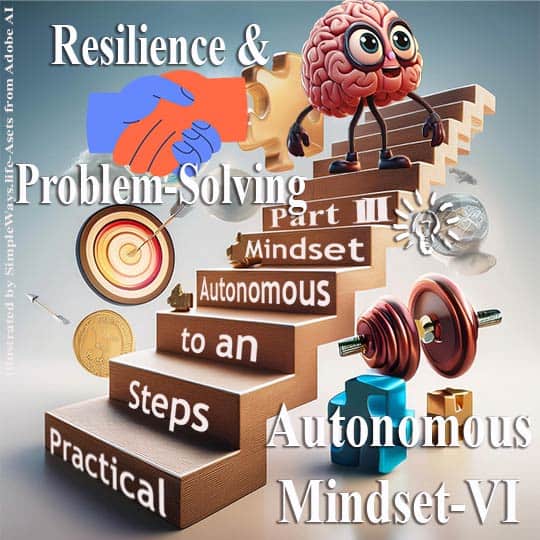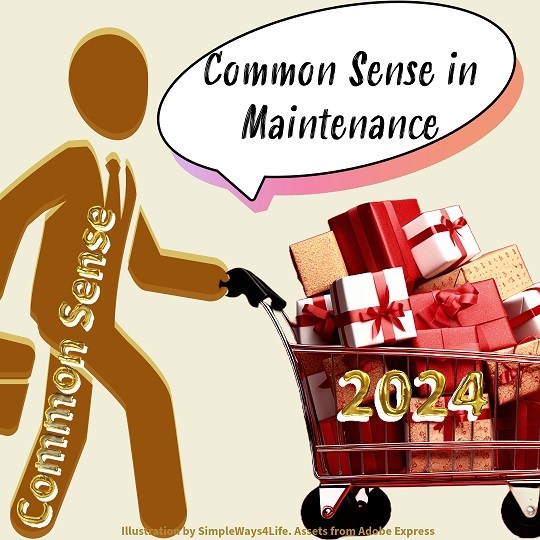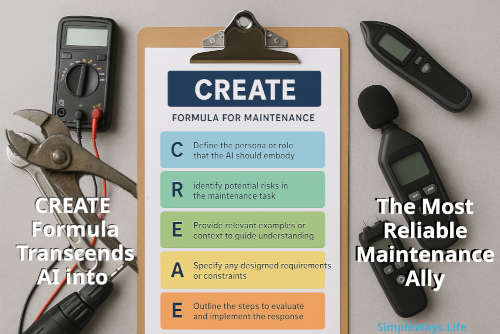Before putting effort to ensure maintenance-data integrity i.e. accuracy, consistency, and reliability of the information stored and managed within the maintenance system, we need to A:collect proper enough maintenance-data, B:prepare it for usage and then C:use this data to make informative decisions.
Collecting enough maintenance-data for reliability analysis or even any common maintenance analysis involves systematic planning, data gathering, and organization. The goal is to have a comprehensive dataset that provides insights into the performance and reliability of systems, equipment, or processes.
Collect enough maintenance-data for reliability analysis:
Any action we take is motivated by a target we want to achieve. This rule proves itself true through our daily life inside and outside work. Sometimes it is a bit confusing when the work targets’ motivators are from our daily life outside work or vice-versa. This encourages us to define clear targets for our maintenance activities to motivate our maintenance teams.
Define Objectives:
Clearly define the objectives of your maintenance and reliability analysis. Understand the specific aspects you want to assess, whether it’s the reliability of equipment, systems, or processes. Then define where we are going to use this data. Some data is collected to trigger maintenance activities. This was detailed in the Secrets of Building a maintenance program training in Arabic and English as linked below

CUSTOMPRICE-TO2JAN26
Other data are collected for performance analysis purposes. You can find a lot of ways to analyze maintenance-data in this post: How to build maintenance around Data Visualization? -3. Among these analytic tools you can find that one of the basic usage of maintenance-data is to calculate Key Performance Indicators (KPIs). Determine the KPIs that align with your reliability objectives. These may include Mean Time Between Failures (MTBF), Mean Time to Repair (MTTR), failure rates, and other relevant indicators.
Select Data Sources:
Identify the sources of data relevant to your reliability analysis. This may include maintenance records, equipment logs, historical data, sensor data, and any other sources that provide insights into the performance and failure patterns. These go hand-in-hand with selecting the Data Collection Methods. Field and feedback data are either collected manually or digitally. The legacy way relies on Manual Data collection which is via a pen and paper and later on we add it to the maintenance system.

CUSTOMPRICE-TO2JAN26
The maintenance system can be a basic files cupboard where we store these papers for further analysis. Or, it can be a full-fledged CMMS. Or it can be something in between as we are going to see later on in the coming chat. On the other hand The Digital-era way relies on hand held devices or mobile apps that are directly connected to the maintenance system. The setup of the digital environment for data collection might be harder than the manual system and the file cupboard. However, the potentials available for the digitally collected data are higher. Also, the accuracy is verified at the instant of entering the data to the same. Once data is in the system, which happens instantly, system verifies it and can trigger actions and update analysis instantly.
Data Sources and Collection Methods
Choose appropriate data collection methods based on your objectives and the data sources. There are some data sources that can be used either with Manual collection methods or digital ones. On the other hand, there are data sources that are inherently digital and collected via digital medium as sensor data, Condition monitoring data and IoT data.
The data sources that can be collected via manual or digital methods are:
- Direct Observation: Observing equipment in operation to gather real-time data. Daily scheduled rounds is the gateway to find these valuable information.
- Maintenance Records: Reviewing historical maintenance records for insights into past failures and repairs. Those are the work orders and the feedback on all maintenance activities. Whether collected manually or digitally, they are the most valuable asset of the maintenance process after the team.
- User Reports: Gathering information from operators or users about any observed issues or failures. In other words that’s the operators knowledge or daily observations. These are one of the crucial parts of reliability and early prediction of failures.

CUSTOMPRICE-TO2JAN26

CUSTOMPRICE-TO2JAN26
The data sources that inherently use digital methods are:
- Sensor Data: Utilizing sensors to collect continuous data on equipment performance.
- Utilize Condition Monitoring: Implement condition monitoring techniques to collect real-time data on equipment health. This may include vibration analysis, thermography, oil analysis, and other predictive maintenance methods.
- Implement IoT and Connectivity: If applicable, leverage Internet of Things (IoT) devices and connectivity to collect data from various sensors and equipment. IoT can provide a continuous stream of real-time data for analysis.
Protocols to govern Maintenance-Data Collection
Define standardized protocols for data collection to ensure consistency across different sources and time periods. This includes specifying how we record data, time intervals for collection, data storage formats, Data quality and security.
We can argue whether these are protocols or policies. The difference is subtle. Policies are guidelines that dictate how an organization should operate, while protocols are specific procedures that must be followed in certain situations. So, you can consider the below recommendations as policies as they are generally descriptions. Later on, you convert them into specific protocols that describe what we should do in specific situations. Or you may consider them as protocols as they target specific topics as security and quality, then you can elaborate n each of them for the detailed procedures in your case

CUSTOMPRICE-TO2JAN26
Data Quality Assessment:
Evaluate the quality of the existing data. Assess its accuracy, completeness, and consistency. Address any issues with data quality before proceeding with analysis. You can refer to this chat for more elaboration: A handbook of maintenance-data integrity
Ensure Data Security and Privacy:
Implement measures to secure and protect the collected data, especially if it includes sensitive information. Adhere to privacy regulations and best practices to maintain data integrity.
Data Logging triggers and reminders
Set up data logging systems to automatically capture relevant data at regular intervals. This is particularly useful for continuous monitoring and historical analysis.

CUSTOMPRICE-TO2JAN26
Document Data Sources and Context:
Document the sources of each dataset and provide contextual information. This documentation is essential for understanding the conditions under which we collect the data. Example we don’t collect operation data as pressure and temperature on maintenance days or during production stoppages as they corrupt the data set and change data trends. On the other hand the maintenance days are the source of the maintenance activities records and findings. And consequently they shape the maintenance KPIs
Continuous Monitoring and Updates:
Establish a process for continuous data monitoring and updates. Regularly review and update the dataset to include new data points and reflect changes in the system.
Training and Awareness:
Train personnel involved in data collection on the importance of reliability data. Ensure that operators, maintenance teams, and data collectors understand the significance of accurate and timely data.
Data Validation and Auditing:
Implement validation checks and periodic audits to ensure data accuracy and identify any anomalies or inconsistencies. You can refer to this chat for more elaboration: A handbook of maintenance-data integrity

CUSTOMPRICE-TO2JAN26

CUSTOMPRICE-TO2JAN26
In Conclusion
By following these steps, you can systematically collect enough maintenance-data for reliability analysis, enabling you to make informed decisions, improve maintenance strategies, and enhance overall system performance.
Data preparation for further analysis and then data utilization will follow in the coming chats. Eventhough a CMMS is not absolutely necessary for reliability data collection, it is a valuable tool that enhances the efficiency, accuracy, and analytical capabilities of the process. However, we can select a simpler tool or method but, consider factors such as the complexity of your maintenance needs, the number of assets, the size of your organization, and the technical expertise of your team. While these tools may lack some of the advanced features of a CMMS, they can still provide a structured approach to reliability data collection for smaller or less complex maintenance operations.
If you feel you need help with any of these ideas we discussed, request a Management Consultancy or Coaching Services From our Store











One Comment